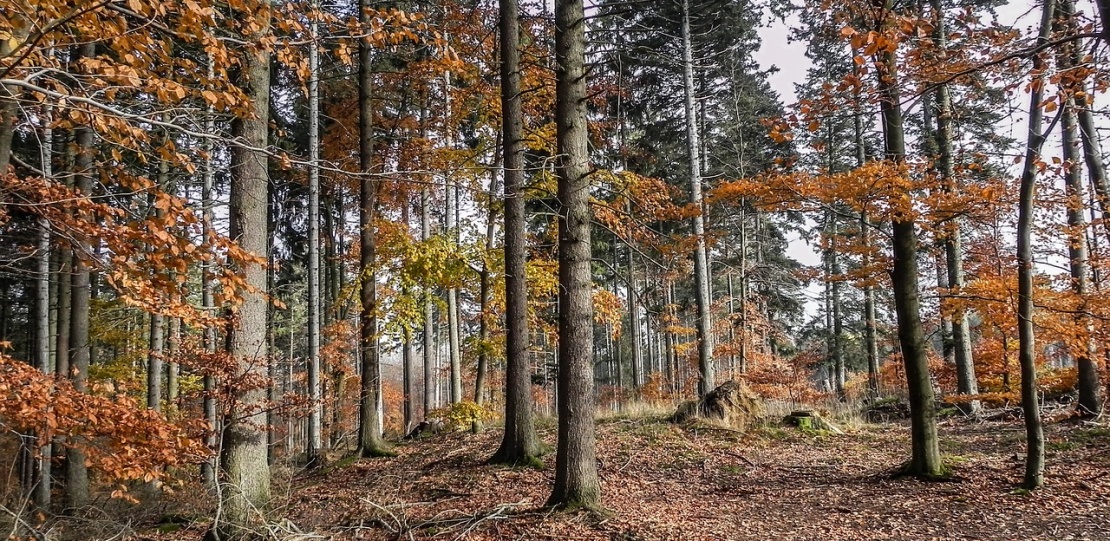Military Forests and partners started a transition to close-to-nature management in Brdy forests
Highly structured mixed forests and age composition instead of large areas of monocultures. Instead of clear-cut logging, well-thought-out shelterwood and selection management methods, where foresters support the internal dynamics of stands with sensitive interventions and give space to a new generation of a forest without the need for clear-cutting, but with the preservation of the microclimate of the parent stand. This is the forestry model that Military Forests and Estates of the Czech Republic, State Enterprise (VLS) will strive for in the coming years in Brdy and subsequently in other locations. The first phase of the project, called LIFE ADAPT BRDY, has just been launched by the state enterprise together with partners from the Faculty of Forestry and Wood Sciences of the Czech University of Life Sciences in Prague, the Forestry and Game Management Research Institute, and Saxon State Forests in selected locations in Brdy. The change of management was supported by the European Union from the LIFE Programme with a subsidy of 73 million crowns, which the state enterprise sees as recognition of this new trend.
Foresters will use support from the European LIFE Programme, which finances nature conservation and the protection of the landscape, environment and climate, for faster transition from classic clear-cut management to methods that are much closer to nature and more sensitive. This unique project will be implemented in Brdy and, with the help of European subsidies, the state enterprise will invest over 120 million crowns in it.
"In Brdy, and gradually in other locations, we are moving on a much larger scale to a proven model of forest management with maximum support of natural processes. In this way, we confirm in practice our ambition to become a domestic leader in the introduction of close-to-nature but, at the same time, sustainable management methods not only in the forest, but in the entire landscape," said Ing. Roman Vohradský, Director of VLS.
"Gradually, but also quicky, we will transform predominantly spruce monocultures in Brdy and elsewhere into new, species-, spatially, and age-differentiated stands, other from the forests that our ancestors established for centuries by applying classic age class forest management. We will use natural processes in the forests to the maximum extent possible, especially natural regeneration, which will also ensure the permanent preservation of the productive functions of the forest," Vohradský added.
On the Czech side, the methodological partners of the VLS project are the Faculty of Forestry and Wood Sciences of the Czech University of Life Sciences in Prague, and the Forestry and Game Management Research Institute, Opočno Research Station. An important foreign partner is Saxon State Forests, which has been applying understorey management methods for more than 30 years on the northern slopes of the Ore Mountains, where foresters from Brdy also go to gain invaluable experience.
"The basis for the change in management will be the operational inventory of the forest, which will take place in the first phase of the project. It will be followed by the preparation of framework management guidelines for individual types of forest development and methodical manuals for forest personnel. The project expects that its achieved results and experience verified by practice will be passed on by Military Forests and Estates to other forest managers, not just in the Czech Republic, through professional events and publications," said Prof. Ing. Róbert Marušák, PhD., Dean of the Faculty of Forestry and Wood Sciences, the Czech University of Life Sciences in Prague.
According to the authors of the project, the transition to semi-natural forest management will require several significant changes. Therefore, part of the project includes, for example, a study of the retention and restoration of selected springs to improve the water balance in the entire area of 22,600 hectares. As part of it, springs suitable for restoration will be selected, following the example of the LIFE for MIRES project (LIFE Cross-border restoration of peatlands to support biodiversity and the water regime in Šumava and Bavarian Forest), which is implemented by Šumava National Park.
"An absolutely fundamental process, without which it is impossible to think about the success of the introduction of these state-of-the-art forest management methods, is the well-thought-out and consistently implemented reduction of ungulates, without which the natural restoration of a wide range of tree species suitable for the habitat is unthinkable," explained Ing. Jiří Novák, Ph.D. from the Opočno Research Station of the Forestry and Game Management Research Institute.
The change to uneven aged mixed stands, which can withstand climate change much better, is a long-term process. It will gradually be visible on the face of Brdy, over the course of decades. However, attentive visitors will be able to observe the first changes at selected locations in the upcoming years.
These are so-called demonstration sites, where VLS have already started (or will start in the near future) the restoration of stands following the principles of selection system. The project envisages that at least ten sites will be created in the pilot phase, each with an area of around 50 hectares. The total area of the demonstration sites will thus be at least 500 hectares.
Close-to-nature forest management strives to increase the stability and resilience of forests to the extent that makes it possible to maintain economic yield in their management. In contrast to so-called age-class forestry, where often even-aged monocultures are created, logging is carried out just by removing individual trees. The higher economic demands of close-to-nature, more sensitive management is compensated by the maximum use of natural processes, with significantly lower costs for the restoration of forest stands.
Military Forests and Estates of the Czech Republic is a state-owned enterprise with almost a century of history, which manages about 140,000 hectares in military districts and other locations of strategic importance for state defence. It manages six large natural sites in Šumava (Boletice military district), Brdy (Jince Military Training Centre and Brdy PLA), in Doupovské hory in Karlovy Vary (Hradiště military district), in Ralsko and Mladá, in Drahanská vrchovina in the Vyškov region (Březina military district), and in Oderské vrchy in Olomouc (Libavá military district). The natural sites under its management are among the best-preserved forest units not only in the Czech Republic, but in the whole of Europe. In addition to forestry and hunting, VLS also engages in organic farming and fishing, and the company also provides guarding and cleaning of buildings for the Ministry of Defence, as well as other services for the armed forces.
The LIFE Programme is a subsidy instrument of the European Union. Its goal is to contribute to the transition to a sustainable, circular, energy-efficient economy based on energy from renewable sources. The aim is to protect, restore and improve the quality of the environment, including air, water and soil, halt and reverse the loss of biodiversity and address ecosystem degradation. Since 1992, this subsidy programme has contributed to the implementation of 5,500 cutting-edge projects in the field of environment and climate throughout the EU totalling more than 5.9 billion Euros.
Co-funded by the European Union. Views and opinions expressed are however those of the author(s) only and do not necessarily reflect those of the European Union or CINEA. Neither the European Union nor the granting authority can be held responsible for them.


